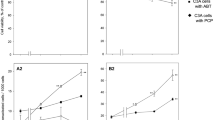Abstract
Nickel, a well-established human carcinogen, was shown to decrease acetylation of histones H4 and H3 in cultured cells. Such a decrease is expected to suppress gene expression. However, nickel is known to not only suppress but also enhance the expression of many genes. So, perhaps, nickel can alter histone acetylation in a more complex way? In a first step of testing this presumption, we examined acetylation status of histones H2A, H2B, H3 and H4, in human (HAE) and rat (NRK) cells exposed to nickel(II) under various conditions. In both cell lines, acetylation of all four histones was down-regulated by nickel(II) in a concentration- and time-dependent manner. Acetylation of histone H2B was suppressed to greater extent than that of the others, with histone H3 being relatively least affected. The analysis of acetylation status of each of the four lysine sites at the N-terminal tail of histone H2B revealed decreases consistent with those observed in the total acetylation patterns, with the K12 and K20 residues being markedly more affected than K5 and K15 residues. Thus, the decrease in acetylation was to some degree site specific. In NRK cells, the observed uniform down-regulation of histone acetylation was consistent with a marked suppression of global gene transcription measured as [3H]-uridine incorporation into mRNA. However, in HAE cells, global RNA expression was transiently increased (in 24 h) before dropping below control after longer exposure (3 days). In conclusion, the effects of Ni(II) on histone acetylation are inhibitory, with their extent depending on the dose and exposure time. This uniform inhibition, however, is not consistently reflected in global RNA expression that in HAE cells may include both increase and decrease of the expression, clearly indicating the involvement of factors other than histone acetylation. The observed effects may contribute to neoplastic transformation of Ni(II)-exposed cells.
Similar content being viewed by others
Abbreviations
- HAE cells:
-
human airway epithelial 1HAEo-cells
- HAT:
-
histone acetyl-transferase
- NRK cells:
-
rat kidney tubular epithelial NRK-52E cells
- PBS:
-
150 mM saline buffered with 50 mM phosphate, pH 7.4
References
Kasprzak KS, Sunderman FW Jr, Salnikow K: Nickel carcinogenesis. Mutat Res 533: 67–97, 2003
Denkhaus E, Salnikow K: Nickel essentiality, toxicity, and carcinogenicity. Crit Rev Oncol Hematol 42: 35–56, 2002
Campbell JA: Lung tumors in mice and man. Br Med J 1: 179–183, 1943
Kasprzak KS: Possible role of oxidative damage in metal-induced carcinogenesis. Cancer Invest 13: 411–430, 1995
Kasprzak KS: The oxidative damage hypothesis of metal-induced genotoxicity and carcinogenesis. In: N. Hadjiliadis (ed). Cytotoxic, Mutagenic and Carcinogenic Potential of Heavy Metals Related to Human Environment. NATO ASI Series 2, Environment 26: 73–92, 1997
Dally H, Hartwig A: Induction and repair inhibition of oxidative DNA damage by nickel(II) and cadmium(II) in mammalian cells. Carcinogenesis 18: 1021–1026, 1997
Hartmann M, Hartwig A: Interaction of carcinogenic metal compounds with deoxyribonucleic acid repair processes. Ann Clin Lab Sci 26: 31–38, 1996
Zhou D, Salnikow K, Costa M: Cap43, a novel gene specifically induced by Ni2+ compounds. Cancer Res 58: 2182–2189, 1998
Costa M: Molecular mechanisms of nickel carcinogenesis. Annu Rev Pharmacol Toxicol 31: 321–337, 1991
Salnikow K, Cosentino S, Klein C, Costa M: Loss of thrombospondin transcriptional activity in nickel-transformed cells. Mol Cell Biol 14: 851–858, 1994
Lee YW, Klein CB, Kargacin B, Salnikow K, Kitahara J, Dowjat K, Zhitkovich A, Christie NT, Costa M: Carcinogenic nickel silences gene expression by chromatin condensation and DNA methylation: A new model for epigenetic carcinogens. Mol Cell Biol 15: 2547–2557, 1995
Berger SL: Histone modifications in transcriptional regulation. Curr Opin Genet Dev 12: 142–148, 2002
Shiio Y, Eisenman RN: Histone sumoylation is associated with transcriptional repression. Proc Natl Acad Sci Nov 100: 13225–13230, 2003
Kurdistani SK, Tavazoie S, Grunstein M: Mapping global histone acetylation patterns to gene expression. Cell 117: 721–733, 2004
Kang J, Zhang Y, Chen J, Chen H, Lin C, Wang Q, Ou Y: Nickel-induced histone hypoacetylation: The role of reactive oxygen species. Toxicol Sci 74: 279–286, 200
Broday L, Peng W, Kuo MH, Salnikow K, Zoroddu M, Costa M: Nickel compounds are novel inhibitors of histone H4 acetylation. Cancer Res 60: 238–241, 2000
Yan Y, Kluz T, Zhang P, Chen HB, Costa M: Analysis of specific lysine histone H3 and H4 acetylation and methylation status in clones of cells with a gene silenced by nickel exposure. Toxicol Appl Pharmacol 190: 272–277, 2003
Cheng RY, Zhao A, Alvord WG, Powell DA, Bare RM, Masuda A, Takahashi T, Anderson LM, Kasprzak KS: Gene expression dose-response changes in microarrays after exposure of human peripheral lung epithelial cells to nickel(II). Toxicol Appl Pharmacol 191: 22–39, 2003
Gruenert DC, Finkbeiner WE, Widdicombe JH: Culture and transformation of human airway epithelial cells. Am J Physiol 268: L347–L360, 1995
Myers FA, Chong W, Evans DR, Thorne AW, Crane-Robinson C: Acetylation of histone H2B mirrors that of H4 and H3 at the chicken beta-globin locus but not at housekeeping genes. J Biol Chem 278: 36315–36322, 2003
Author information
Authors and Affiliations
Corresponding author
Rights and permissions
About this article
Cite this article
Golebiowski, F., Kasprzak, K.S. Inhibition of core histones acetylation by carcinogenic nickel(II). Mol Cell Biochem 279, 133–139 (2005). https://doi.org/10.1007/s11010-005-8285-1
Issue Date:
DOI: https://doi.org/10.1007/s11010-005-8285-1




